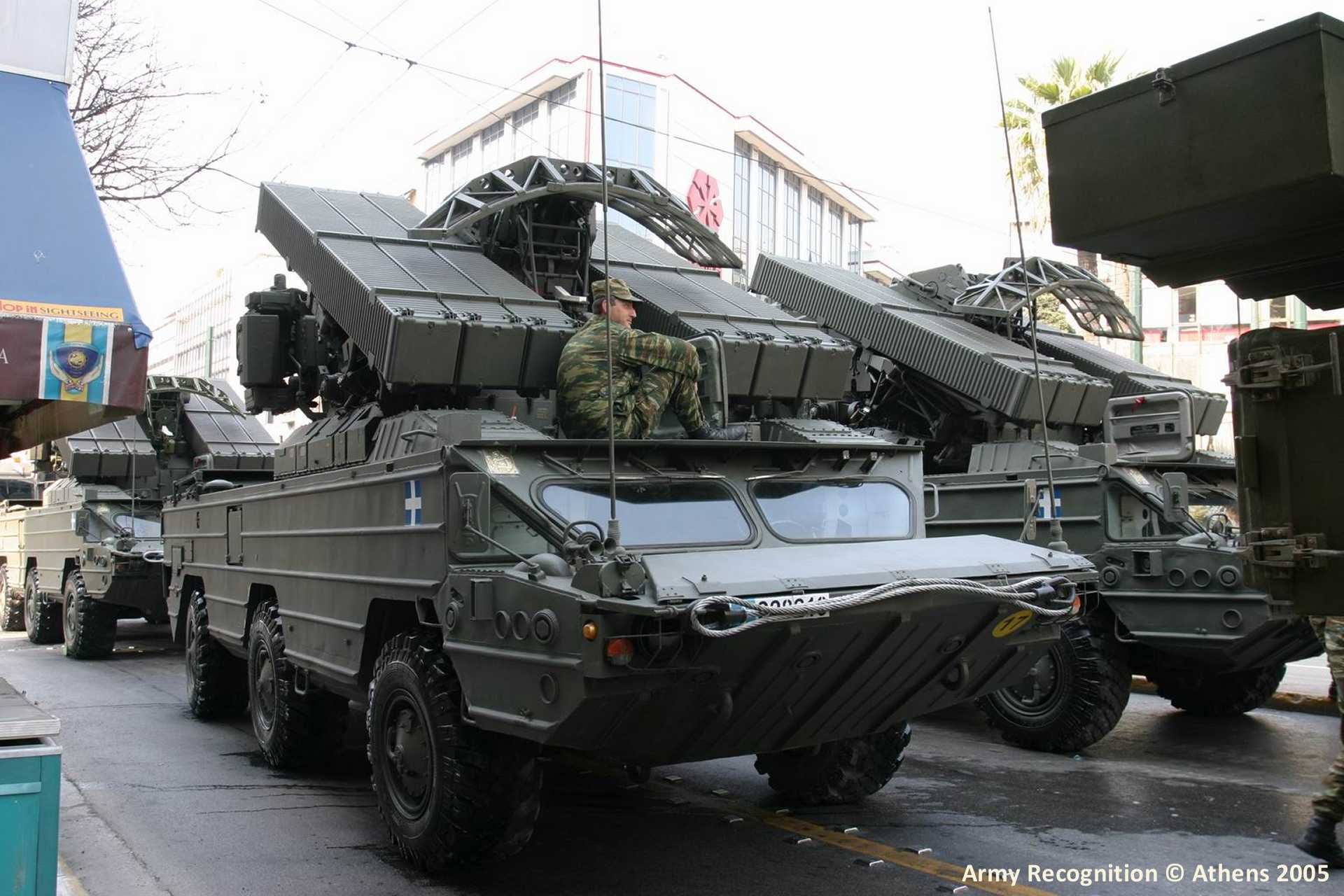Breaking News
Greece to transfer S-300 and Tor-M1 air defense systems to Armenia instead of Ukraine in strategic shift.
According to Enikos.gr on November 25, 2024, Greece is proceeding with the transfer of several Russian-made air defense systems, including the S-300 PMU-1, Tor-M1, and Osa-AK, to Armenia instead of Ukraine as part of its broader strategy to replace aging equipment with Western and Israeli technologies. This decision aligns with the Greek Armed Forces' plan to de-Russify its arsenal and address challenges related to maintaining Russian systems, which have been exacerbated by sanctions on Russia and associated supply chain disruptions.
Follow Army Recognition on Google News at this link

As NATO and the EU now prioritize providing Ukraine with Western-standard systems, Greece has therefore opted to redirect its Russian-origin systems to Armenia, where they can be more effectively integrated and maintained. (Picture source: CyprusMail)
According to information from the Greek General Staff of National Defense (GEETHA), the transfer of these systems to Armenia is part of a cooperative effort involving France, which will also provide Armenia with additional weapons. This initiative reflects strategic considerations, including Greece’s historical ties with Armenia, shared religious affiliations, and mutual interests in countering Turkish support for Azerbaijan. The proximity of the Nagorno-Karabakh conflict and its implications for regional stability also factored into this decision.
The systems being transferred include Greece's S-300 PMU1 system, acquired following the Cyprus Missile Crisis and stationed in Crete. The system comprises one regiment with four systems, eight fire units, 32 launchers, and 175 missiles. The S-300, with a range of 200 kilometers and the ability to track up to 100 targets, was first used operationally in Greece during the 2013 White Eagle exercise, 15 years after its acquisition. Despite prior discussions about sending the S-300 to Ukraine in exchange for a PAC-3 Patriot missile system, concerns over potential gaps in Greek air defense led to the cancellation of those plans.
Armenia, which has experience operating Russian-made systems, is considered well-equipped to integrate the S-300 and other transferred systems into its existing defenses. The country’s prior collaboration with Russia included training for the operation of S-300 systems, and Armenian forces have used these systems as part of a joint air defense framework under the Collective Security Treaty Organization (CSTO). Spare parts and maintenance for these systems, previously sourced from Armenia by Greece, have played a critical role in this transfer decision.
To replace the outgoing Russian systems, Greece is investing in new Israeli air defense systems, including David’s Sling, Barak MX, and Spyder. These systems offer coverage ranges from 20 to 300 kilometers and are part of a larger project to establish an “Iron Dome” over the Aegean islands. This initiative, costing approximately €2 billion, is expected to be operational by the end of 2026, providing a timeline for when the transferred systems might leave Greek service.

Armenia, which has experience operating Russian-made systems, is considered well-equipped to integrate the Soviet-era Osa-AK and other transferred air defense systems into its existing defenses. (Picture source: Army Recognition)
The cooperation with Armenia extends beyond equipment transfers. The number of Armenian students in Greek military academies has doubled, and joint exercises have become more frequent. A recent exercise, "Olympic Cooperation 24," conducted at the Petrohori range in Xanthi, involved live-fire scenarios with Greek tanks, French armored vehicles, and simulated drone operations. Such collaborations are intended to enhance Armenia's military preparedness, particularly in light of Azerbaijan's use of drones in previous conflicts.
Greece has experience replacing military assets following international transfers. An earlier initiative involved sending 40 BMP-1 infantry fighting vehicles to Ukraine in exchange for 40 German Marder vehicles. While initial plans included 120 replacements, domestic political concerns reduced the scope. Greece is also in advanced negotiations with the United States for the acquisition of 164 Bradley armored vehicles, with a projected cost of €4 million per vehicle after reconstruction.
The decision to transfer these systems to Armenia rather than Ukraine reflects changing dynamics in military supply preferences. NATO and the EU now prioritize providing Ukraine with Western-standard systems that align with existing supply chains. Greece has therefore opted to redirect its Russian-origin systems to Armenia, where they can be more effectively integrated and maintained.
This transfer is part of Greece's broader effort to modernize its defense capabilities while aligning more closely with NATO and EU standards. The collaboration with France and Armenia aims to strengthen regional partnerships and address shifting security challenges in the Eastern Mediterranean and South Caucasus. By replacing Russian systems with Israeli technology and reinforcing Armenia's defenses, Greece seeks to maintain a strategic balance in a region marked by competing interests and ongoing tensions.


























